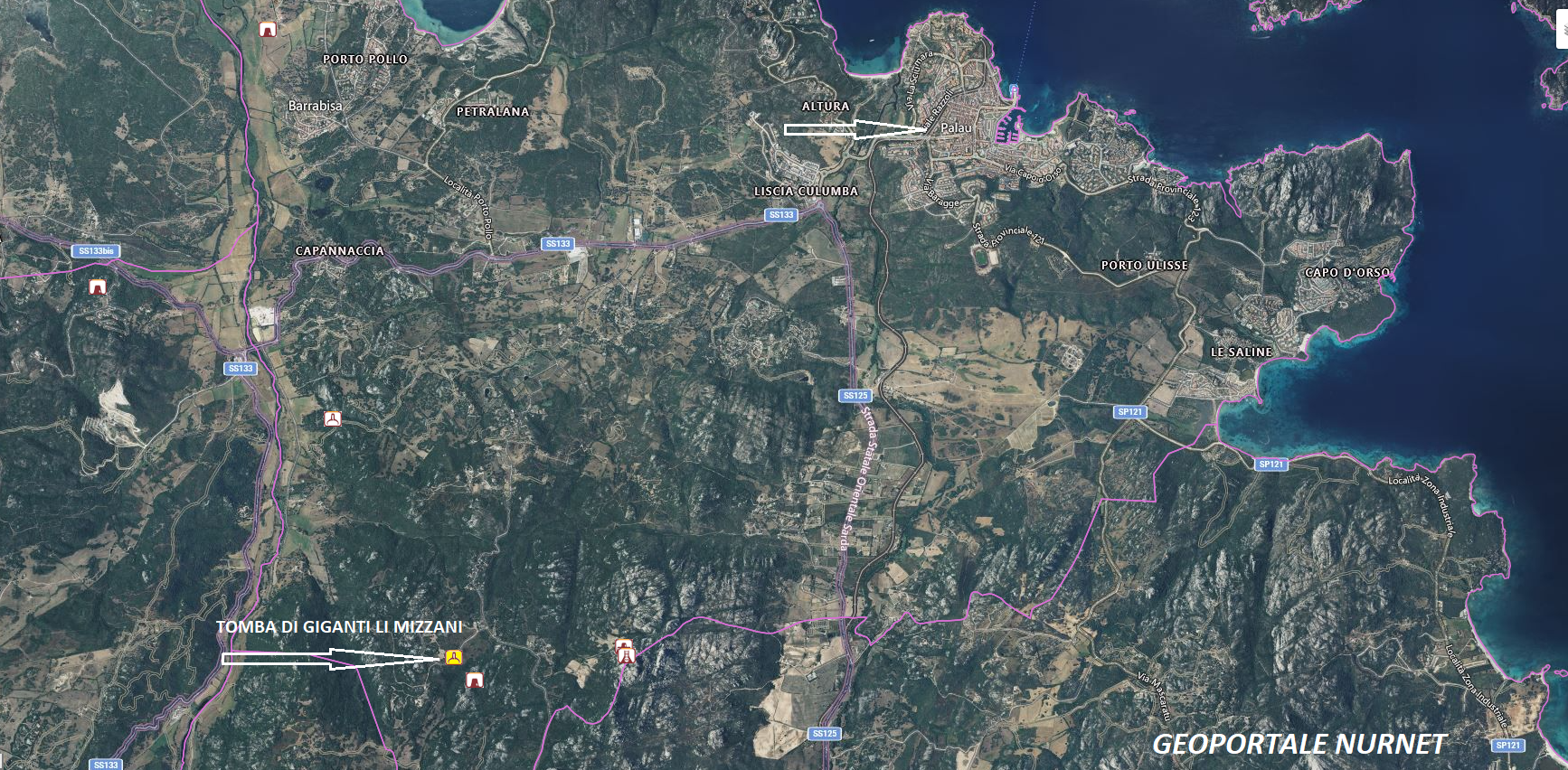The tomb of giants of Mizzani, in the territory of Palau, stands on a short plateau dominated by the heights of Monte Cau, a few kilometers from the sea.
The monument, small in size, is built using the technique of rows.
The tomb body, facing east (length 7.25 m), contains a rectangular funerary corridor (length 6.10 m; width 0.90/1.00 m; height 0.65 m) closed at the back by a single arch-shaped headstone (width 1.02 m; height 0.95 m).
The exedra is only partially preserved (circumference 12.76 m; height 3.75 m): the hemicycle is bordered by small orthostatic slabs, at the base of which develops a low bench-seat (width 0.35 m; height 0.25 m), also incomplete, intended to hold offerings.
The rear wall of the exedra connects seamlessly with the tomb body. At the center of the exedra stands the monolithic stele (width 1.55 m; height 2.80 m; thickness 0.25 m), smaller in size compared to documented examples in other Gallura tombs and lacking the arched partition. The monolith rests, without foundations, on one side on a flat stone and on the other directly on the ground. The entrance door, semicircular (width 0.55 m; height 0.66 m), features an unusual element, likely due to a mistake by the builders: the careful beveling of the perimeter profile on the inner face; this finishing is normally reserved for the outer face.
The fragmentary materials that came from the right side of the exedra (fragments, jars, vases with applied plastic cords, curved cups) date back to the Late Bronze Age.
The tomb was excavated in 1966 by Editta Castaldi. The excavation involved what remained of the structure after its demolition, which took place in 1918 to reuse the stone material in the construction of the nearby stazzo of Li Mizzani. (Sardegna Cultura)
The photos of the tomb of giants Li Mizzani are by: Diversamente Sardi, Gianni Sirigu, Bibi Pinna, Manlio Rubiu, and Marina Olla.







